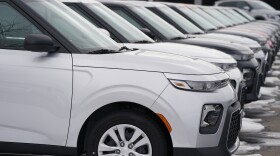Hawaiʻi County's General Plan 2045 will serve as a blueprint for the island's development over the next two decades. It sets out several goals related to reducing greenhouse gas emissions and adapting to climate change.
Transportation is the county's primary source of emissions. The sector releases about 1.7 million metric tons of carbon dioxide a year— and total transportation emissions are expected to increase.
To stave off some of those emissions, the county wants to reduce the number of miles people are driving in personal vehicles, which will require more transportation options to connect communities across the large, rural island.
The plan has an objective to increase mass transit ridership by 50% by 2045, with a focus on expanding services for youth, low-income, elderly residents and people with disabilities.
Protecting biodiversity is another big topic in the plan. It suggests creating incentives for landowners to replant and maintain forest cover in watersheds. It also advocates for the support of native species seedbanks and the maintenance of shoreline setback areas.
Hawaiʻi County also hopes to be "zero waste" by 2045. That may mean prohibiting the disposal of organic material in landfills and requiring recycling at all county offices, facilities and base yards. The island currently only has one operational landfill.
The full plan is available online for public comment. Copies are also being distributed to public libraries around the island.
County officials are holding a public meeting on the plan at 2 p.m. on Aug. 28 at the West Hawaiʻi Civic Center in Kona. Another meeting will be held at 2 p.m. the following day at the Arc of Hilo.






